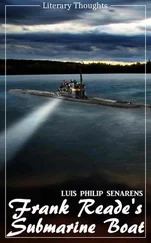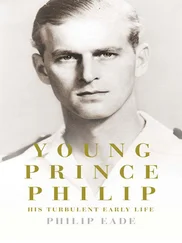Soviet prestige and world influence now exceeded those of any former Russian empire, and they continued to grow. In 1961, to general astonishment, the Soviet Union sent the first astronaut to orbit planet Earth, and when the ebullient new Party Secretary, Nikita Khrushchev, boasted that it would be able to match the United States in terms of economic output in a decade or even less, his claim did not seem entirely ridiculous. Within the short span of twenty years Soviet Russia had moved from the position of an embattled pariah to become a great power with a strong claim to world pre-eminence.
Once the German offensive at Kursk in the summer of 1943 had been broken, Soviet military operations read like a triumphant progress. But the successes were not won easily. Attention focused first on a stretch of the front along river Dnieper near Kiev, where Russian longboats had once gathered for the voyage to Constantinople. The first Russian imperial capital was defended by battered, but still formidable, divisions under the command of the able Field Marshal von Manstein, and by the great and treacherous river itself. The man in charge of the Soviet forces in the sector of intended breakthough to Kiev was General Vatutin. The carefully planned operation was heralded by a terrible barrage of more than 2,000 guns, mortars and rocket-launchers concentrated on to a front only 4 miles wide. A few days later guns in Moscow firing blank charges roared out a salute to greet the news that Kiev had been cleared of enemy troops. Czech troops under a Colonel Svoboda had taken part in the operation. They had been told that in fighting for Kiev they would be fighting for Prague. Events were to justify the claim. 1
From this point on the story of the war can be reduced to a series of pincer movements which snapped shut to trap enemy armies; and a list of battles to cross great European rivers — the Bug, the Vistula and the Danube, the Oder and the Elbe. Prague was one of the very last cities to be taken: the Germans held it even after the fall of Berlin. But the war was fought on many levels. Aside from the military operations, there were diplomatic wars between the Allies over grand strategy and struggles between political leaders and military commanders. Moreover the war helped to shape the peace which followed. The victory over Nazi Germany was comprehensive and, as the Allies recognized, due largely to Soviet sacrifice. The shape of the new Europe was determined partly by the position of forces on the ground when the fighting stopped, and partly by agreements made between the Allies while the war was still in progress.
Peace arrangements, like military operations, were the subject of careful planning. The partition of post-war Germany, for example, had been proposed at an early stage by the Americans, though on the basis of a north-south rather than an east-west division, and the Soviet government was engaged in strategic preparation for the peace many months before the war ended. At Tehran in 1943 it was agreed that Poland’s frontiers should be moved westward, leaving the Soviet Union in possession of Polish territory it had occupied in 1939 (the predominately Orthodox areas) but compensating the Poles in the west at Germany’s expense. In November 1944 Maxim Litvinov, who had been Soviet Foreign Minister before the war and was now engaged in foreign-policy planning, sent his successor, Viacheslav Molotov, a position paper based on the premiss that the United States might revert to isolationism or even fall out with Britain (and they did indeed disagree over important questions such as the future of the British Empire). In such an event, he argued, Anglo-Soviet co-operation would bring advantages. With this end in view, Litvinov suggested that the British be accommodated over Iran (Persia), Afghanistan and Sinkiang in return for control of the Straits and hence free access from the Black Sea to the Mediterranean (which had been offered to Russia during the First World War).
Such an agreement [he added] can only be brought about on the basis of an amiable delineation of spheres of interest in Europe… The Soviet Union can consider Finland, Sweden, Poland, Hungary, Romania, the Slavic countries of the Balkan peninsula, and also Turkey as [constituting] its maximum sphere of interests. Holland, Belgium, France, Spain, Portugal and Greece [on the other hand] can certainly be included in the English sphere. 2
When Churchill met Stalin in Moscow in 1944 they agreed a division of the Balkans into spheres of influence, subsequently known as the ‘percentages agreement’. According to this, Romania and Bulgaria would be in the Soviet sphere, Greece in the British, while Soviet and British influence in Hungary and Yugoslavia would be split fifty-fifty. It was also agreed that the three Allied Powers, plus France, would occupy Germany at least until it was de-Nazified. It seemed unlikely that the Western Powers would yield the Straits, however, so in June 1945 Moscow proposed joint Soviet—Turkish responsibility for their control, and pressed the Turkish government to allow Soviet troops to be stationed on the Bosphorus and at the Dardanelles. It even proposed that part of Trabzon and Karasund be transferred to Soviet control — but Turkey stood firm. So did Iran when it was pressed to cede some territory on the frontier with Azerbaydzhan. 3At Potsdam in July—August 1945 the Allies called on Japan to surrender unconditionally, and agreed that the Soviet Union should receive southern Sakhalin and the Kurile Islands, and reparations from all those countries that had fought against it. It also made provision for continuing co-operation between the Allies after the war. Not everything had turned out as expected, however.
Stalin had undertaken to declare war against Japan within three months of Germany’s defeat, but when the time came the United States no longer needed Soviet participation and did not want it — but Stalin insisted on joining in for fear that the Americans would otherwise dictate peace terms and so threaten Soviet interests in the Far East. Britain and the United States refused to recognize Soviet retention of the Baltic countries, yet did not dispute it. It transpired that, while most Romanians and Hungarians would have preferred their countries to have been included in the West’s sphere of influence, most Greeks — and for a time most Frenchmen and Italians too — were sympathetic to Communism and would have preferred inclusion in the Soviet sphere.
Contrary to popular belief, Stalin stuck to the letter of his agreements with the Western Powers. Rather than being ideologically motivated, he believed that ‘whoever occupies at territory also imposes his own social system on it.’ 4Not only did he sacrifice the Communists in Greece and allow those of France and Italy to be thwarted, he conceded rather more in Hungary than he need have done. In brief, he was a cautious empire-builder of the old Russian type — a realist, intent on achieving concrete objectives. To this end he used the Communist Party as an Established Church, as a means of controlling his own followers, like Russian grand princes of a former age; and he adapted Communist ideology quite freely to direct the faithful at home and around the world in the directions he desired. Until the Soviet Union acquired its own atomic bomb in August 1949, however, his posture to the West remained defensive. Both Russia and its Western allies were subject to similar pressures, economic and popular, to demobilize quickly and most of the victorious Soviet troops who had first occupied central Europe were soon ordered home.
High though the German casualty rate had been, Soviet casualties were higher. 5Certainly the Soviet command had been less careful with lives, and when the war ended it was just as careless in demobilizing soldiers. In the summer of 1945 an Italian Jew recently released from a concentration camp in Germany observed squads of recently demobilized soldiers on their way home, singing songs. They
Читать дальше





![Stephan Orth - Behind Putin's Curtain - Friendships and Misadventures Inside Russia [aka Couchsurfing in Russia]](/books/415210/stephan-orth-behind-putin-s-curtain-friendships-a-thumb.webp)





